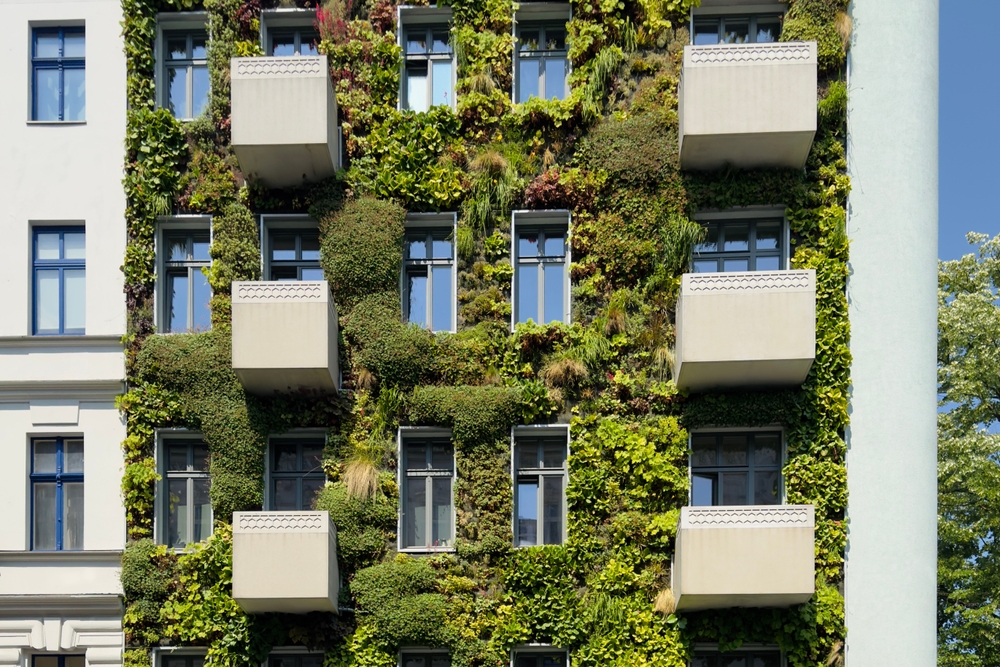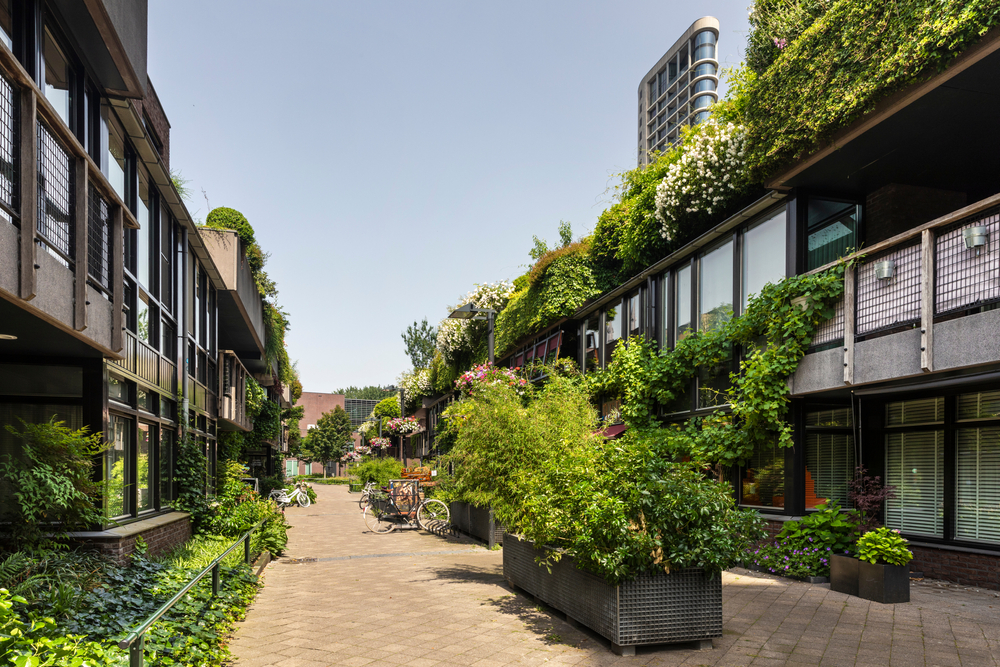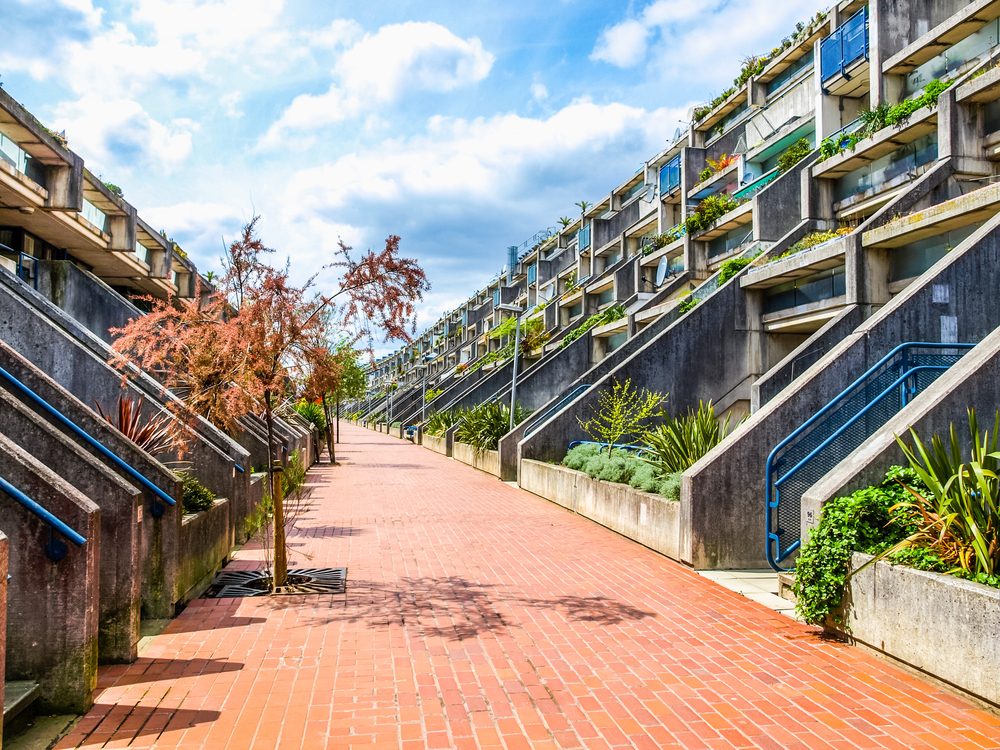06 Aug 2024
Tips for Implementing Biophilic Design in Building Architecture
Tips for Implementing Biophilic Design in Building Architecture
Share:
Have you ever felt more at ease while being in a garden, listening to the sound of flowing water, or enjoying the warmth of sunlight on your skin? Imagine if you could bring these experiences into your home. Interestingly, all this is possible with the help of biophilic architecture.
In the modern era, biophilic design seems increasingly popular. However, the origins of biophilic architecture can actually be traced back much further. Ancient architecture, such as the Hanging Gardens of Babylon, also utilized biophilic design principles. But what exactly is biophilic architecture?
Definition of Biophilic Architecture
Biophilic architecture is a design approach that connects people with nature. Imagine a home or office filled with greenery, featuring large windows for natural light, and using natural materials like wood and stone. All of this aims to create an environment that is not only beautiful but also healthy.
There are at least three essential elements that should be present in biophilic design: direct nature, natural patterns, and place and culture.

While biophilic design is often associated with greenery, it is not solely about plants. Biophilic design also emphasizes harmony between the building and its surroundings, as well as the local culture, and adopts principles found in nature.
Biophilic design also considers natural mechanisms. For example, it involves examining the air circulation in a home and applying those principles to the building to create optimal airflow and lighting.
Advantages of Implementing Biophilic Architecture Design
Imagine if your home or workplace were filled with calming natural elements. This is the essence of biophilic architecture. Implementing this design not only makes the space more beautiful but also brings numerous health benefits. Here are some advantages of implementing biophilic architecture design:
1. Improving mental and physical health
Stress, mental disorders, and cardiovascular diseases are expected to become more common in the future. The causes are not only due to increasing life demands but also a lack of connection with nature. By incorporating natural elements into your environment, the risk of stress and cardiovascular diseases can be reduced.
2. More comfortable and safer living spaces

Biophilic design can make the atmosphere feel more calm and comfortable. Additionally, more natural environments have been shown to reduce crime rates by 7-8% and increase property values by 4-5% (AODR) (ēdn).
3.Helps enhance productivity
Large companies like Google, Apple, and Amazon have adopted biophilic design in their offices. The results? Employee productivity increased by up to 8%, creativity surged, and overall well-being improved by 13%. Additionally, biophilic design has been found to contribute to a reduction in employee absenteeism (Optrys).
Tips for Implementing Biophilic Design
When observing biophilic design elements in a building's architecture, it's hard not to be captivated. You might even feel tempted and interested in adopting it yourself. But how? Here are some tips:
1. Maximize Ventilation
Ensure your home has plenty of ventilation. The more ventilation there is, the more fresh air and natural light will enter the home. This can help create a healthier living environment.
2. Utilize Sunlight
People naturally enjoy warm and bright places. Therefore, try to arrange a room in your home, such as a living room or dining area, where you can sit and enjoy morning sunlight. Not only is it comfortable, but it can also enhance your mood.
3. Bring Natural Elements Indoors
Indoor plants, small water fountains, or even natural elements like wood and stone can infuse your green home with a natural vibe. Placing green plants in the corners of rooms or using natural wood furniture can make the home feel fresher and more vibrant.
4. Create Enclosed Areas with Surrounding Views
Try to create areas where you feel safe but can still enjoy the surrounding views. For example, a rooftop or a small garden in the front yard. In these areas, you can feel closer to the environment while still feeling secure.

5. Add Decorations with Natural Shapes
The dominance of straight lines and right angles is often found in the increasingly popular minimalist style. To create an organic and pleasant feel, try adding decorations with curved shapes such as waves, flowers, or seashells.
6. Match with the Location
Adapt your home design to the location where you live. The same consideration should apply when choosing plants or other decorative elements. This way, your home will feel more comfortable and harmonious with the surrounding environment.
7. Use Biomimicry Concepts
Biomimicry is a concept that imitates nature. You can adopt this concept in your home by using interior paint in natural colors or choosing furniture made of wood or rattan. This will bring a stronger natural touch to your home.
Seamless Integration of COLORBOND® Steel in Biophilic Design

Titik Tentram Café in Bantul, Yogyakarta uses environmentally friendly building materials from COLORBOND®.
COLORBOND® Colored Steel is an innovative and perfect choice for creating architectural masterpieces that are not only aesthetically pleasing but also durable. With technology proven over more than 50 years, COLORBOND® is well-suited for biophilic design, which aims to connect people with nature.
Biophilic design prioritizes natural elements in built environments, such as the use of sustainable and eco-friendly materials, and the integration of elements like natural light, good ventilation, and vegetation. COLORBOND® offers several advantages that support this concept. Firstly, its long-lasting color coating not only provides visual beauty but also protects buildings from extreme weather, corrosion, and pollution, reducing long-term maintenance costs.
Additionally, COLORBOND® has excellent heat reflectivity, helping to maintain comfortable building temperatures and improve energy efficiency. The material is also available in various colors that can blend with natural elements, such as green and brown, creating visual harmony with the natural environment.
By using COLORBOND®, architects and designers can create buildings that are aesthetically pleasing, functional, and in harmony with biophilic design principles, providing occupants with a closer connection to nature.
Integrating COLORBOND® colored steel into biophilic design offers numerous benefits, from aesthetics to exceptional durability. With COLORBOND®, you can create buildings that are not only beautiful and long-lasting but also in tune with nature.

